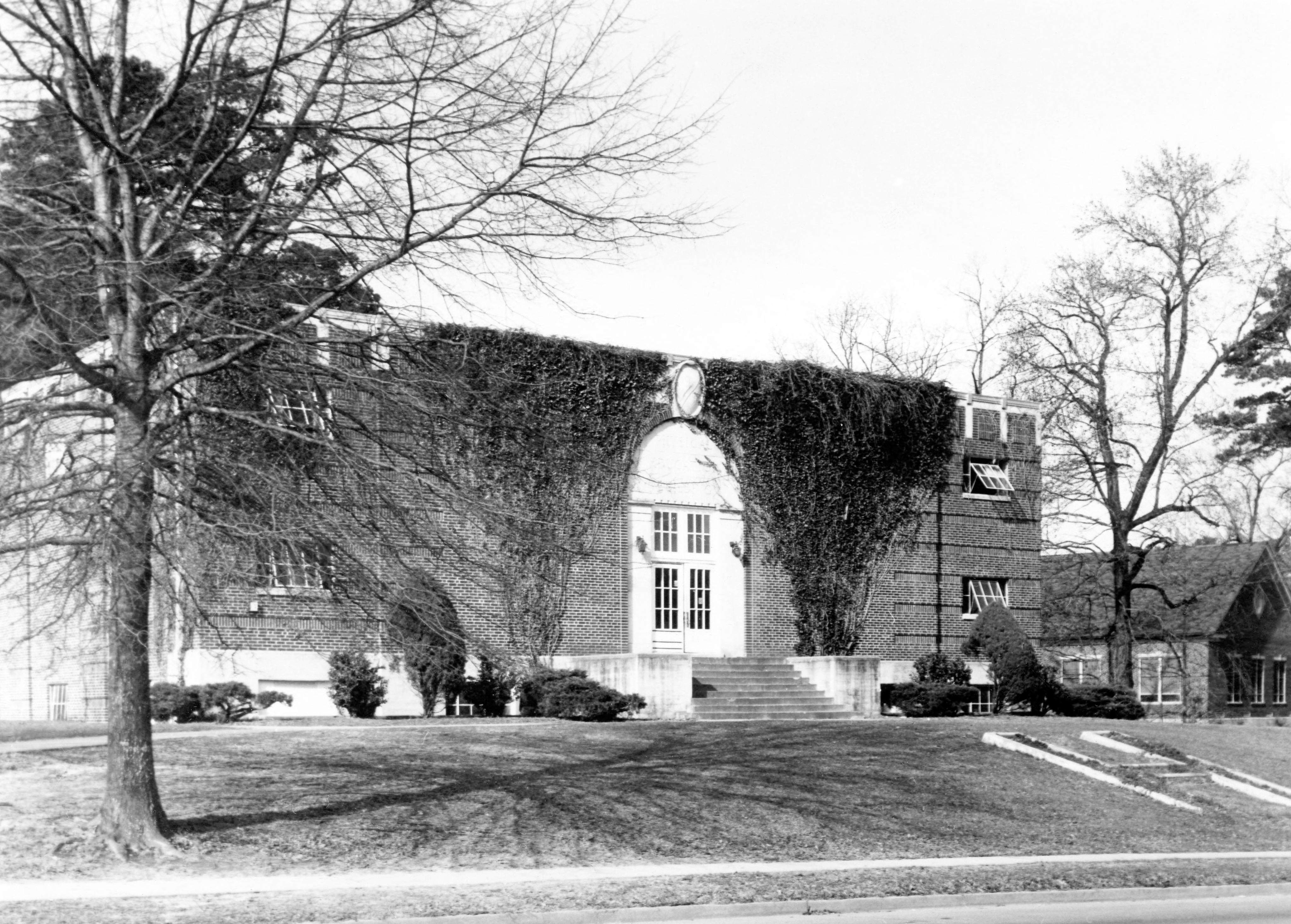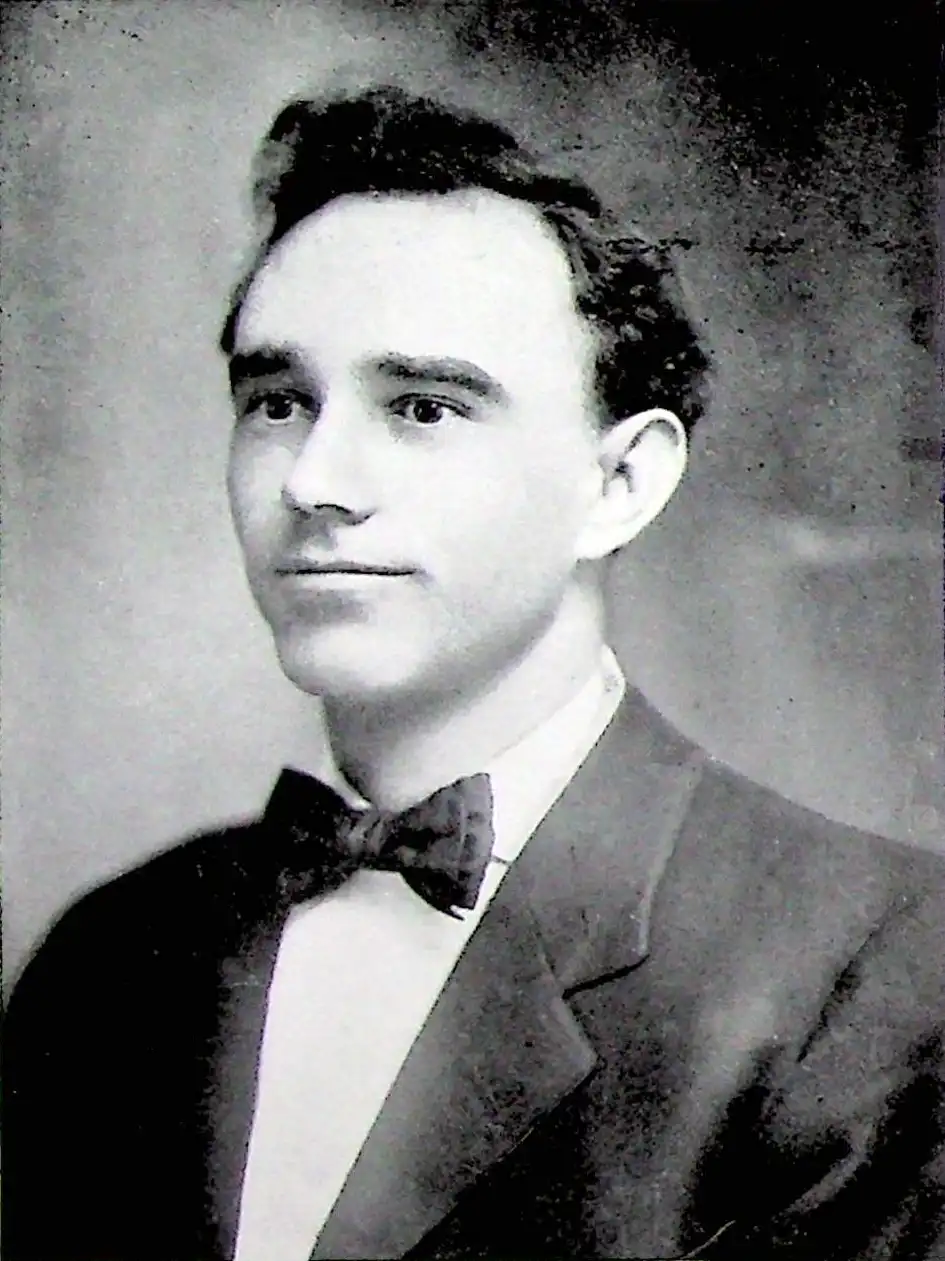Haygood Gymnasium (1935)

Namesake
Dates
- Built: 1935
- Named: 2/20/1935
- Removed: 12/14/1952 (Fire)
Location Accuracy
- Location approximate based on maps and photographs.
Map
History
Henderson received approval on January 9th, 1934, for a loan of $50,000 from the Federal Emergency Administration of Public Works for the construction of a physical education building, which would be located on the east campus on the former site of Goodloe Hall, the men's dormitory that had burned in February, 1928. Although the building was originally scheduled to be completed by September, 1934, construction was delayed until September until September because of extended negotiations with the Federal Government
Finally, at a special ceremony on Saturday morning, September 22 1934, J. B. “Dad” Garrett, Superintendent of Maintenance Grounds since 1901, broke the ground for the new $50,000 gymnasium. He used the historic old spade from the days of Henderson-Brown. Before the ground-breaking, Miss Mary Sue Mooney and President Womack spoke briefly at the “impressive ceremonies”.
In about five months' time the two-story red brick structure was completed and ready for dedication on February 14, 1935. The new gymnasium included a basketball court 94 feet by 54 feet, with a playing space of 84 feet by 48 feet, and bleacher-seats for over 500 people; a swimming pool 25 feet by 60 feet, with bleacher-seats for 275 persons; shower and dressing rooms; lockers; offices for the Department of Physical Education; and storage rooms for athletic equipment. Because of the filters in the swimming pool, students had to wear either cotton or rubber bathing suits while in the pool since wool caused the filters to clog. The College Bookstore ordered a supply of cotton bathing suits for students.
For the dedication of the new gymnasium on February 14, the College once again conducted an elaborate ceremony. The large crowd filled the bleachers and then “swarmed on to the floor of gymnasium” After a 30-minute concert by the Reddie Band, and a brief prayer and the introduction of guests by President Womack, Fletcher McElhannon, a Trustee and the principal speaker, commented at length on the growth of the College and paid tribute to the vision of President Womack, who had been instrumental in the construction of new buildings throughout the 1930s. Following McElhannon's address, President Womack announced general regulations for the use of the swimming pool and the gymnasium, which would be a “home affair for the college students on the week-ends," indicating that a varied program of these periods was also being planned, such as free dances, parties, and group games.
To complete the ceremonies, a swimming team under direction of Mrs. Scott Wood of Hot Springs presented a short exhibition in the new pool. Back in the gymnasium, the guests participated in dance, with music furnished by the Henderson orchestra. The dedication program was extended through Friday, February 15th to include the annual Valentine Dance, when the King and Queen of Hearts were crowned.
As many recognized, one element was missing at the formal dedicatory ceremony: the name of the building. The Trustees had already voted and had petitioned the Federal Government to name the gymnasium Haygood Hall to honor the former Henderson-Brown coach, James Raymond “Smiling Jimmy” Haygood, who had served the College intermittently from 1907 to 1925 and who had died of a heart attack at a Little Rock hotel on January 18, 1935.
Besides its use for basketball games, as President Womack had predicted, Haygood Gymnasium immediately became the center for dances and other activities involving large numbers of students. In one such activity, President and Mrs. Womack and the faculty were hosts at the opening of school to over 400 students at an informal reception honoring all Henderson students on Tuesday, September 10, 1935, in the new gymnasium. After going down the receiving line, students “formed two separate circles and were introduced in turn.” Officers of the various campus organizations served punch to the guests; other students furnished music during the reception. To climax the entertainment for evening, students and faculty participated in an informal dance.In the spring of 1936, the Beautification Committee landscaped the area surrounding Haygood Gymnasium with junipers and roses; the large “H,” outlined in concrete on the slope in front of the Hall, with lavenders. Specimens of wild native plants, such as dogwood, had been set out on the slopes of the ravine nearby.
Henderson suffered its fourth major loss to fire when Haygood Gymnasium burned on December 14, 1952, shortly after the building had been closed following a fraternity dance. The cause of the fire was not determined; but, according to one theory, the fire spread rapidly because of Christmas decorations in the large hall. The College had to replace this structure in addition to all of the other buildings needed by the expanding institution at the time.
